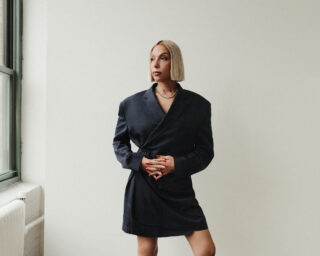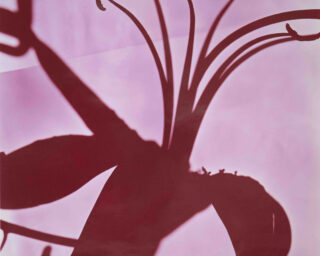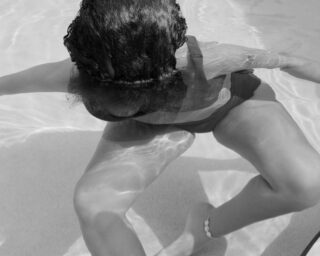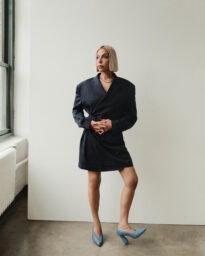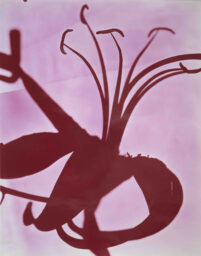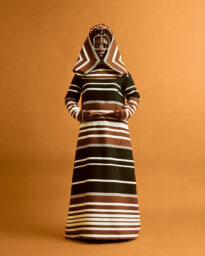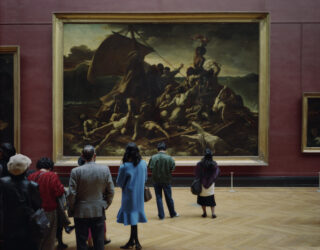Anne Prentnieks on Laurie Simmons at the Jewish Museum
This review first appeared in Issue 4 of the Aperture Photography App: click here to read more and download the app.

Installation view of Laurie Simmons: How We See © The Jewish Museum, NY. Photograph by: David Heald.
Laurie Simmons has long used photography as a tool for documentation, capturing cagey scenes punctuated with surprise. Unlike her Pictures Generation peers, whose imagery commented on various cultural zeitgeists, Simmons’s pictures summon uncanniness reminiscent of surrealist imagery. From cinematically staged dollhouse scenes featuring the ominously unsettled housewife to the portrait series of a life-sized Japanese sex doll sweetly tucked into bed or inside a bubble bath, her photographs conjure the feeling of a faux déjà vu.

How We See/Tatiana (Pink), 2015
Today, our impressions of strangers and acquaintances alike are as often based on actual encounters as on the optimistic Tinder profile, Facebook account, Instagram upload—a virtual myth that amounts to a sprawling, self-curated, two-dimensional gallery. How We See (all works 2015), Simmons’s most recent series of large-format close-up portraits, suggests that the process of modern identity shaping can be as willfully blind as it is untrue. Here, her lens fixates on the pristinely made-up faces of models whose eyelids are meticulously painted over to create the illusion of larger eyes (and a sexualized, doll-like countenance) à la cosplay (costume play) tradition.

How We See/Ajak (Violet), 2015
The title of each picture—Lindsay (Gold); Ajak (Violet), etc.—references the model by name as well as the vibrant color of her school-picture-day-like backdrop. Edie (Green) shows the transgender model Edie Charles, with her hair in a neat ponytail. (Charles, along with Peche Di, of Peche (Pink), is one of two transgender models included in the series.) A small sketch is embroidered onto the pocket of her white turtleneck: it is a head sprouting a ponytail, a tiny cartoon-detail of the model herself. Simmons worked with fashion designer Rachel Antonoff on the costumes for her models, and these unexpected details (an embroidered cigarette, for instance) subtly adorn the images’ edges, suggesting layers of identity with a humored wink.

How We See/Lindsay (Gold) , 2015
With their actual eyes closed, the models in each picture appear serenely in possession of their redefined personas. The lightly fuzzed texture of their foundation-shellacked faces curiously contrasts with the soft-wilted tissue of painted-over eyelid skin, a stand-in for the glossy surface of an eyeball. Hauntingly, the gaze of the painted pupils is always a bit askew, appearing to follow something invisible beyond the picture plane with an almost ecclesiastical focus. These painted-on eyes focus on a mysterious subject while the models in fact see darkness. In the earlier Kigurumi series (2014), featuring figures dressed up in full-bodysuits inspired by the eponymous Japanese cosplay subculture, Simmons began to explore such situational blindness. The pictures in How We See, also expose two opposing sensibilities: a childlike vulnerability, and a bold embodiment of an alter-ego mentally accessed when one physically exits the real world by darkening their sightline.

Laurie Simmons, How We See/Edie (Green), 2015 © Laurie Simmons, courtesy the artist and Salon 94.
The current exhibition presents a small grouping of the closed-eyed portraits in the stately neo-classical architecture of the Jewish Museum. With its decorated ceilings and French doors, the gallery itself both codifies a natural comparison to traditional portraiture and highlights the images’ temporal reality: they are at once richly photographed paintings as well as relics of a performance. By obliterating scale, Simmons’s camera enhances the dreamlike quality of her subjects; dolls are animated while humans register as dolls. For decades Simmons’s work has variously questioned definitions of place, gender, and role—in the home, inside one’s head, or onstage—but identity is the deeper theme that drives her work. Role-playing reveals internal yearnings, and the works in How We See channel introspection; each portrait shows a unique persona that emerges as the model adopts a foreign façade. In every instance, they mimic an intensely modern phenomenon, of generating identity from a composite of fact and fantasy.
Anne Prentnieks is a writer and critic living in New York.
Laurie Simmons: How We See is on view at the Jewish Museum through August 9.










